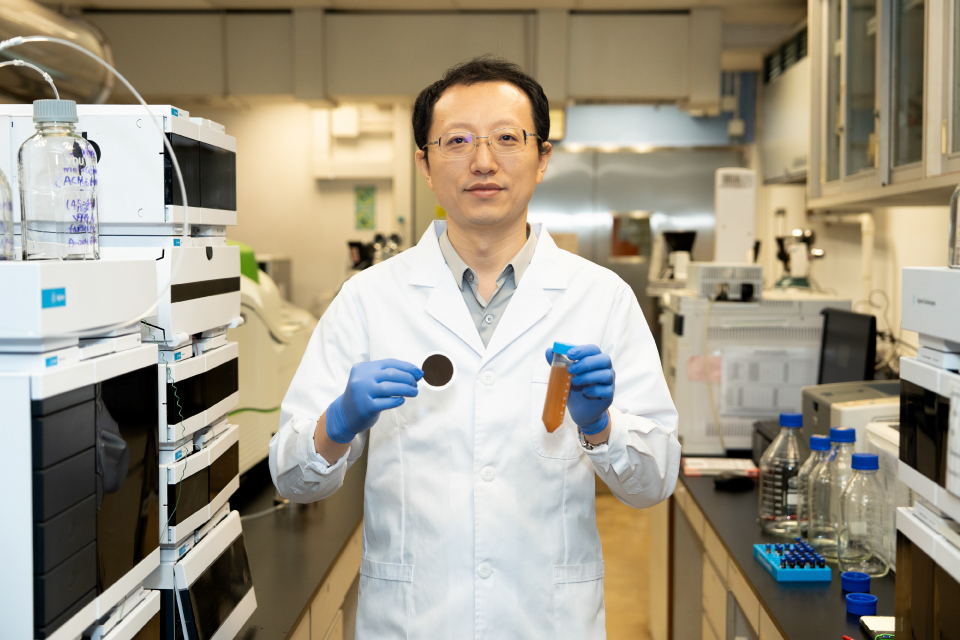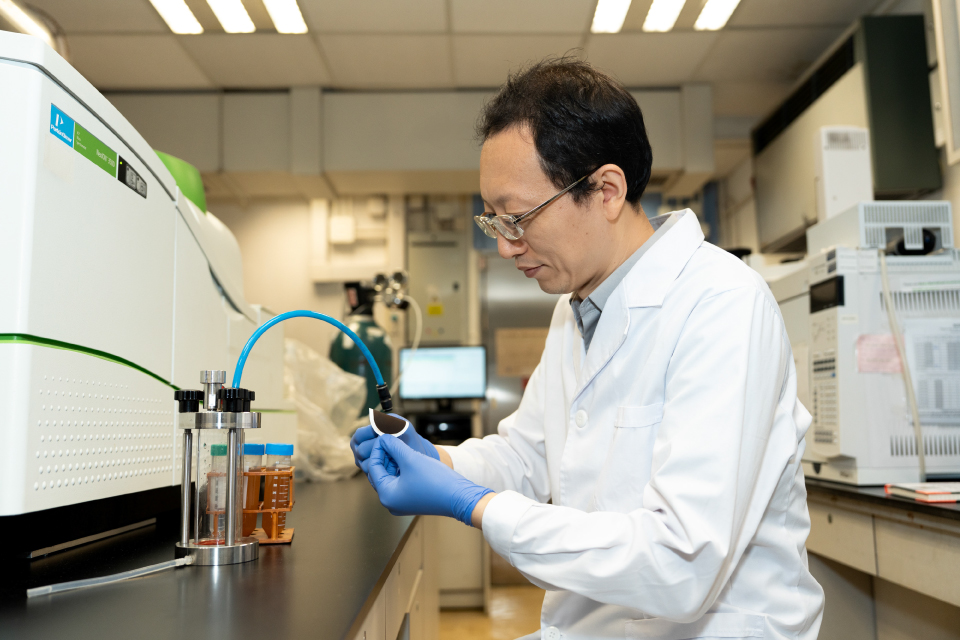Discover HKBU
New catalytic membrane enhances wastewater treatment efficiency
30 May 2025
Water pollution is an increasingly serious global issue, in which phenolic compounds pose a significant threat to the world’s potable water supply. These pollutants are widely present in industrial effluents, agricultural runoff and municipal wastewater, posing risks to human health and water quality.
Conventional methods for removing these pollutants often rely on hazardous chemicals or energy-intensive processes. While advanced oxidation processes (AOPs) have been developed to remove pollutants from water, they require the generation of reactive oxygen species (ROS), which can lead to high costs and is environmentally unfriendly.
To address these issues, a research team led by Professor Zhao Jun, Associate Professor of the Department of Biology, has developed a new catalytic membrane that can greatly improve the efficiency of cleaning wastewater using AOP. This innovation offers a safer, more cost-effective, and environmentally friendly solution for wastewater treatment. The research findings have been published in the international academic journal Advanced Functional Materials.
The new catalytic membrane, named “NGCF-OV”, is made from a composite material, combining two advanced materials, namely N-doped reduced graphene oxide and cobalt ferrite. This membrane significantly enhances the efficiency of generating ROS and can completely degrade bisphenol A, a common and harmful pollutant, in just 86 milliseconds, outperforming many existing cleanup methods.
Professor Zhao states: “This research marks a significant advancement in wastewater treatment and provides a promising strategy for addressing environmental pollution. This technology effectively integrates the processes of oxygen activation and pollutant degradation within a single membrane, offering a more sustainable and efficient approach to treating contaminated water.”
He adds that the membrane can generate reactive oxygen species without external energy inputs, making it particularly suitable for emergency pollution remediation and everyday water treatment applications.
The application of the NGCF-OV membrane is not limited to degrading specific pollutants like bisphenol A. Its superior catalytic properties can help break down various organic pollutants in wastewater, such as antibiotics and pesticides, paving the way for more advanced pollution remediation technologies and contributing to the protection of public health and the environment.

